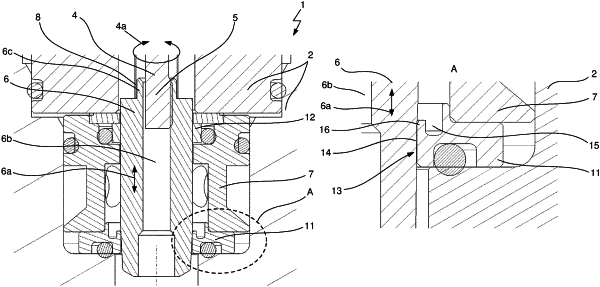| CPC F16K 3/243 (2013.01) [F16K 3/246 (2013.01); F16K 31/04 (2013.01); F25B 41/35 (2021.01)] | 13 Claims |

|
1. A device for controlling a flow rate and expanding a fluid in a fluid circuit, the device comprising:
a housing;
an actuating element and a valve element arranged in an interior of the housing and aligned in an axial direction, wherein the valve element is substantially circular cylindrically shaped and includes a sealing area formed on a lateral surface thereof;
a valve seat element disposed within the interior of the housing, the valve seat element including an opening formed therethrough having the valve element received therein, wherein the opening of the valve seat element guides movement of the valve element in the axial direction; and
a first sealing element, wherein the valve element is sealed towards the housing as well as the valve seat element via the first sealing element, wherein the first sealing element is shaped as a circular ring disk with an inner surface formed on an inner diameter, a first side face facing in the axial direction towards the valve seat element, and a second side face facing in the axial direction away from the valve seat element, and wherein the inner surface of the first sealing element forms a sealing seat in conjunction with the sealing area of the valve element when the valve element is received within the inner surface of the first sealing element during movement of the valve element in the axial direction, wherein the first sealing element has a recess formed in the first side face thereof with the recess extending circumferentially to surround the inner surface of the first sealing element, wherein the recess extends from the first side face in the axial direction into the first sealing element towards the second side face thereof.
|